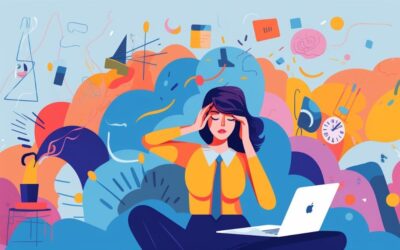In nearly four billion years of evolution, nature has developed incredibly resilient and efficient biological systems. So, why don’t we seek more inspiration from nature for our own sustainable innovation? That’s the trend called biomimicry!
Biomimicry has actually been around a while in business. Everyone’s heard of Velcro, the original hook-and-loop fastening system used on shoes, bags, and a plethora of other accessories. The founder was inspired by burs that stuck to his dog’s fur. Another classic example is the Japanese TGV (Shinkansen)—with its nose that resembles a kingfisher’s beak—thereby reducing vibrations and noise for passengers.
To be sure, there are plenty of other examples of biomimicry in business, and across a wide range of sectors and use cases. We’ve offering 10 to inspire you (and who knows?) set you on your own biomimetic journey.😉
Biomimicry’s benefits defined
Before illustrating how biomimicry is used in business through examples, let’s make it clear what it is and why you can benefit from it.
What is biomimicry?
Biomimicry is an approach to solving human problems by imitating solutions nature has already developed.
The origin of the term comes from the Greek “bios” (life) and “mimesis” (to imitate). In other words, biomimicry is literally “the imitation of life.” By observing the mechanisms and properties of living things, we can solve complex problems in innovative ways.
Watch this video to discover examples of biomimicry use in the workplace👇
What’s in it for my business?
Leveraging biomimicry offers business several advantages, for example:
- Sustainable innovation: Drawing inspiration from nature enables us to create high-performance products and services that respect the environment.
- Cost reduction: Biomimicry allows us to optimize resources—and in particular reduce our consumption of energy and raw materials.
- Resilience: By imitating nature (which has always evolved and will always continue to evolve), companies can overcome the challenges they face and adapt to change.
- Differentiation: More innovative and sustainable products enable us to stand out from the competition and even penetrate new markets.
10 companies that innovate by drawing inspiration from the living world
Many organizations are already taking advantage of these benefits. Let’s look at 10 examples of how businesses are benefiting from biomimicry blueprints.
1. Qualcomm: a screen inspired by butterflies
Qualcomm, an American company specializing in mobile technologies, has designed a revolutionary display using biomimicry: the Mirasol Display. Morpho butterfly wings were the source of inspiration here. They’re able to reflect light and create vivid colors without having actual pigment.
Unlike conventional displays, which require energy-hungry backlighting, the Mirasol screen uses ambient light to display images. This reduces energy consumption and ensures perfect visibility, even in direct sunlight. That’s the perfect solution for mobile devices!
2. Boeing: microlattice, an ultra-light material inspired by bone structures
Boeing, the world leader in the aerospace industry, has developed one of the world’s lightest (yet strongest) materials: microlattice. This metal is inspired by bone structures, which combine lightness and strength.
Thanks to their internal honeycomb structure, all animals—birds in particular—have bones that are both light and strong. Now Boeing has replicated this structure to create a material that is 99.9% air, yet strong enough to withstand heavy loads. This significantly reduces an airplane’s weight, in turn reducing fuel consumption and improving fuel efficiency.
3. ECOncrete: concrete that supports marine biodiversity
Israeli company ECOncrete has developed an innovative new type of concrete that fosters marine life. Unlike conventional concrete, which is smooth and not conducive to biological colonization, ECOncrete’s concrete mimics natural surfaces such as rocks and coral reefs by imitating their irregular textures.
In nature, marine organisms anchor themselves to these rough surfaces to develop. ECOncrete draws on this principle to create coastal infrastructures (like seawalls and jetties) which—in addition to fulfilling their technical function, preserve marine ecosystems. This example shows that biomimicry not only enables business innovation but also has a positive impact on our ecosystem. It’s an approach advocated by regenerative companies in particular.

4. Sharklet Technologies: an antimicrobial surface inspired by shark skin
Sharklet Technologies is an American company developing innovative antimicrobial surfaces that prevent the proliferation of bacteria without all the need for toxic chemicals. Their technology is inspired by shark skin, a natural surface that simply prevents micro-organisms from attaching to it.
In the wild, shark skin is covered with tiny denticle-like structures that interfere with bacterial adhesion. By reproducing these patterns, Sharklet Technologies has created a microstructured texture that prevents bacteria from colonizing surfaces and limits the risk of infection. A technology particularly suited to medical environments, where infection prevention is essential.

5. Biome Renewables: wind turbines inspired by maple leaves
Specializing in renewable energies, Canadian company Biome Renewables has found inspiration in maple seeds and owl feathers for its innovative wind turbines. By observing how falling maple seeds spin, the company has created turbine blades capable of capturing wind energy more efficiently.
Biome Renewables also found inspiration in owl feathers, known for their ability to reduce noise in flight, minimize turbulence, and reduce the noise generated by wind turbine blades. This biomimetic design not only improves turbine efficiency but also makes them quieter.
6. GreenPod Labs: preserving food thanks to nature
Indian company GreenPod Labs uses biomimicry to fight food waste. It’s developed a technology that draws on plants’ natural protective mechanisms to extend the shelf life of fruit and vegetables and is completely chemical-free.
In nature, certain plants release organic compounds that slow down the ripening of fruits, protecting them for longer. GreenPod Labs has recreated this natural process using biodegradable sachets containing plant extracts. Placed close to fresh produce, these sachets delay food degradation. They can thus replace the chemical preservatives the food industry has traditionally relied on.

7. Mycoworks: ecological leather made from mushrooms
Several examples also show that biomimicry is making inroads into the fashion industry. Take a look at Mycoworks, an American start-up that’s come up with an ecological alternative to leather from animal hides.
Their material, called Reishi, is made from mycelium, the underground part of mushrooms. This natural network of fibers is as strong as animal leather yet requires no breeding or harmful chemicals. Drawing inspiration from the natural mechanisms of mycelium, Mycoworks has succeeded in developing an eco-responsible leather with the same texture and durability of traditional leather.
So, the next time you see a mushroom, ask yourself: can I do more with it than eat it?🤨
8. Prophesee: technology inspired by human vision
French company Prophesee, meanwhile, has found its own inspiration in the human retina to develop revolutionary neuromorphic sensors for cell phones. Unlike conventional cameras, which capture a complete image at every moment, Prophesee’s sensors detect only changes in the environment, just as the retina does, making them more efficient and responsive.
This natural principle enables Prophesee to design sensors that consume less energy and operate faster. A technology that is particularly useful in sectors such as industry, robotics and autonomous cars.

9. Terumo Corporation: from mosquitoes to medical needles
Terumo Corporation, a Japanese company specializing in medical devices, has developed innovative needles that mimic how mosquitoes pierce the skin. Traditional needles often cause pain during injections, but Terumo has designed an ultra-fine needle that reproduces the technique of mosquitoes, which are known to bite without the person even sensing any pain.
Mosquitoes have a proboscis with micro-teeth that enable them to penetrate the skin gently, without all the tissue trauma of traditional needles. Terumo has applied this same biomimetic approach to create thinner, more comfortable needles, reducing pain during medical injections.

10. Interface: carpeting inspired by forest floors
Interface is a pioneering manufacturer of sustainable, eco-friendly floor coverings. Inspired by natural ecosystems, it developed the first biomimetic carpet range, called “Entropy,” with a design that imitates the random appearance of forest floors.
Unlike traditional carpets, which follow repetitive patterns, Entropy tiles are assembled in no particular order, considerably reducing waste during installation. If a tile is damaged, it can be replaced without compromising the overall aesthetic, just like in nature, where each element blends harmoniously into its environment.
All these examples show how biomimicry can replace and improve everyday materials!

A final word
These 10 examples show that using biomimicry in business is not just a trend but more a strategic approach to sustainable innovation. By imitating natural mechanisms, perfected over billions of years, companies can solve complex challenges while reducing their environmental impact.
Whether it’s Qualcomm with its butterfly-inspired screens, Mycoworks with its eco-friendly leather, or Interface with its biomimetic carpet, these companies prove that nature is an inexhaustible source of inspiration!
Are you looking to innovate your organization? Why not also take inspiration from nature to rethink your organizational model? Download our white paper and discover how innovative models can improve your company’s agility and performance.👇
Access White Paper
In our white paper “The Ultimate Guide to Organizational Models,” you’ll receive:
- a comprehensive overview of innovative organizational models (like Agile, Teal, Holacracy, Constitutional Management, and more)
- testimonials from pioneer organizations that have successfully adopted it
- best practices for choosing, implementing and measuring the effectiveness of our model
- digital tools to facilitate your transition




